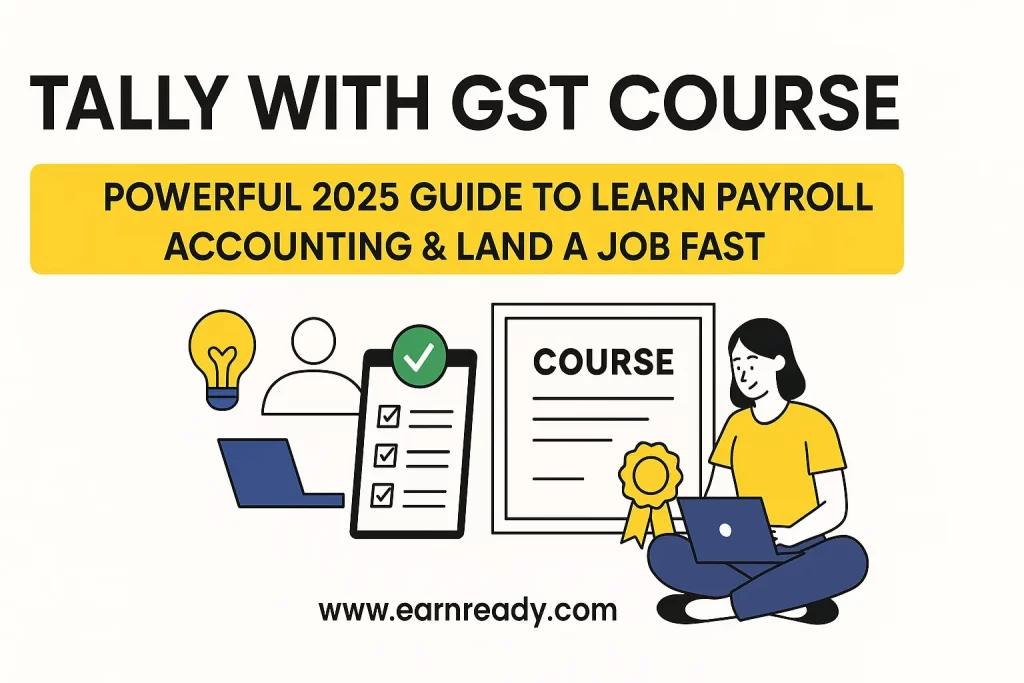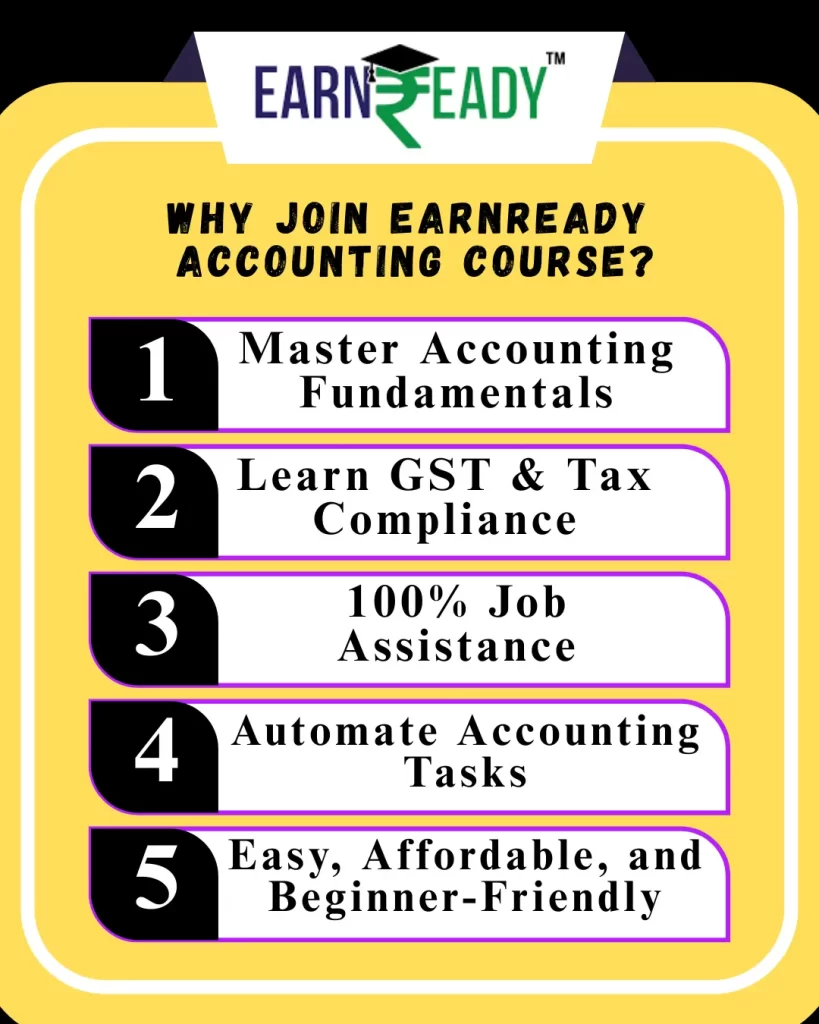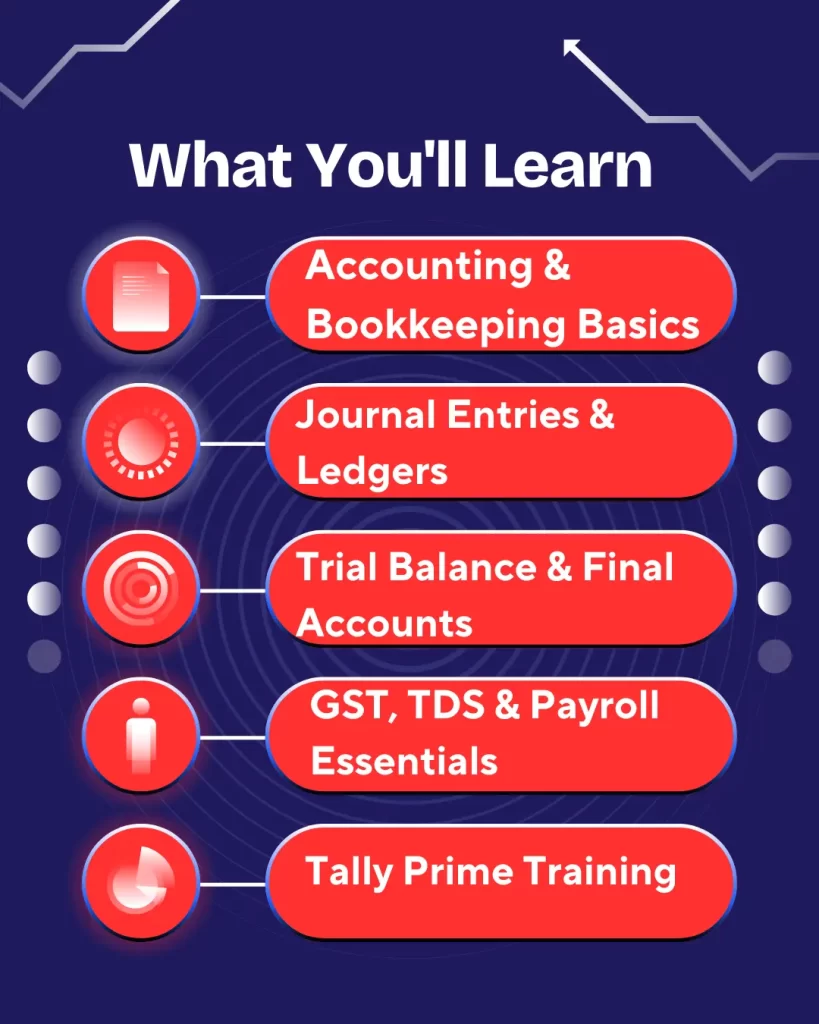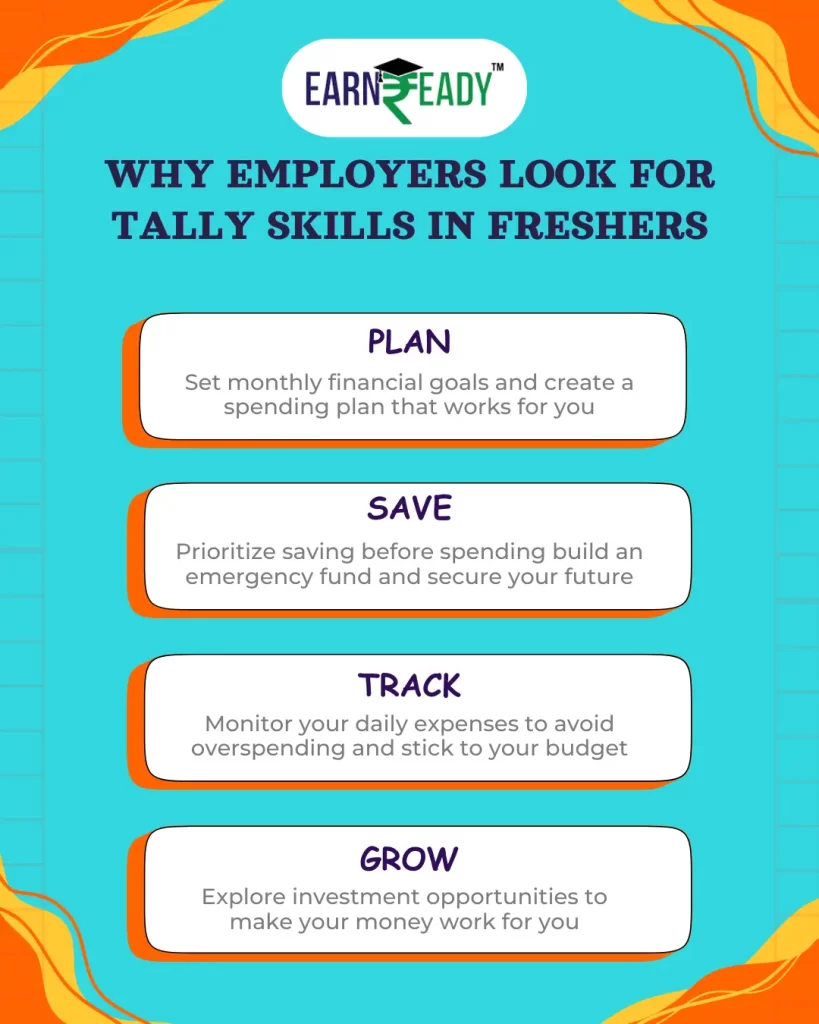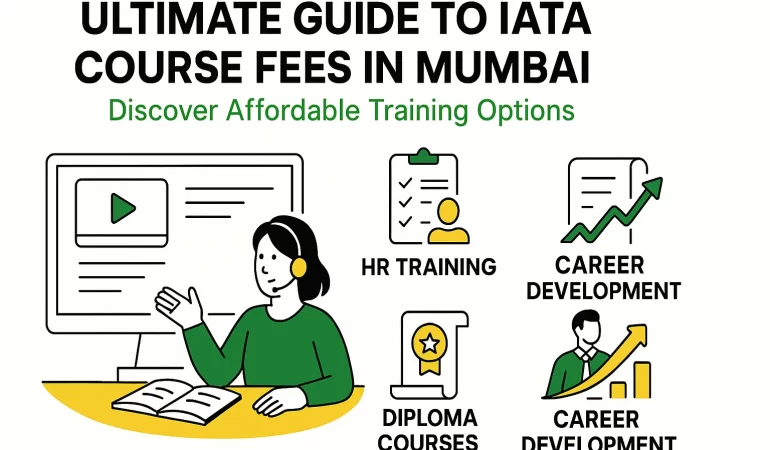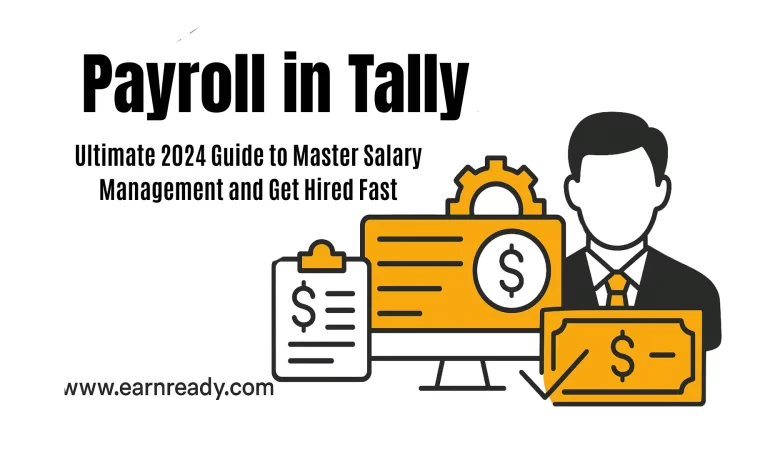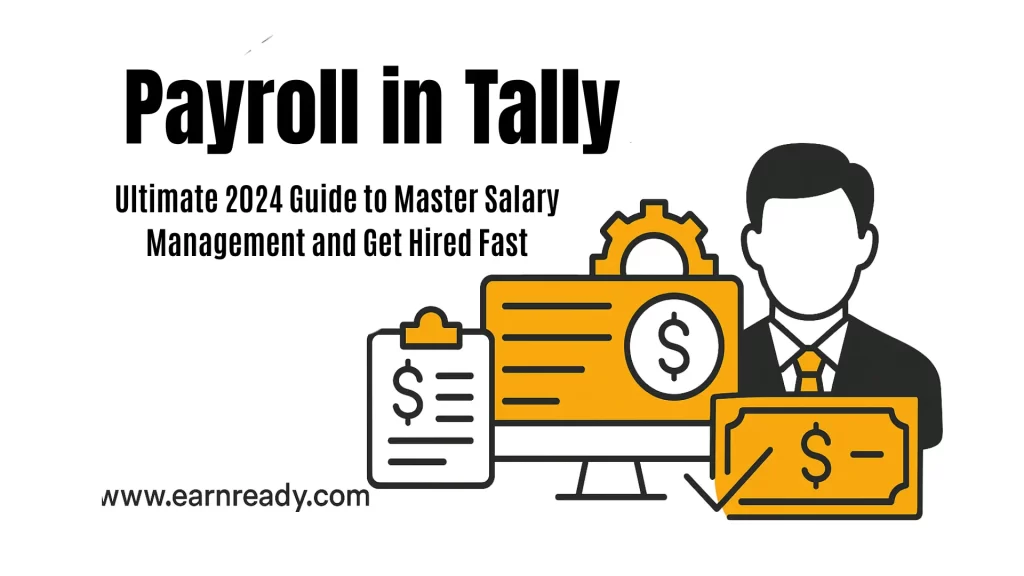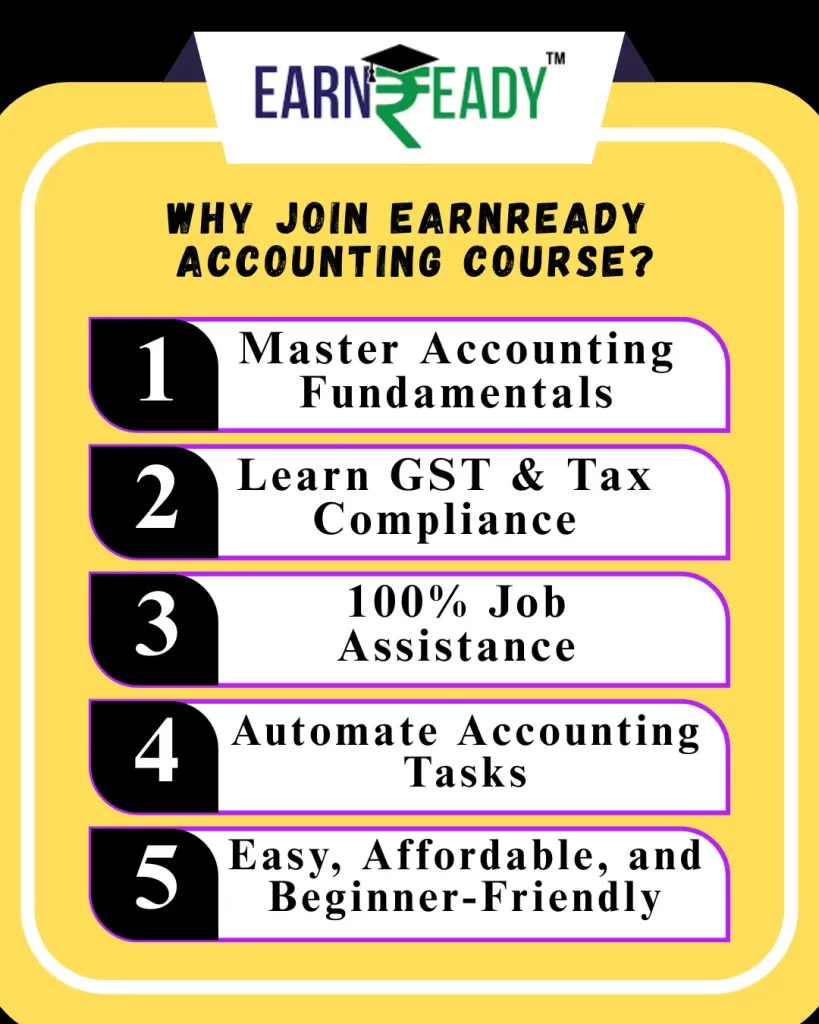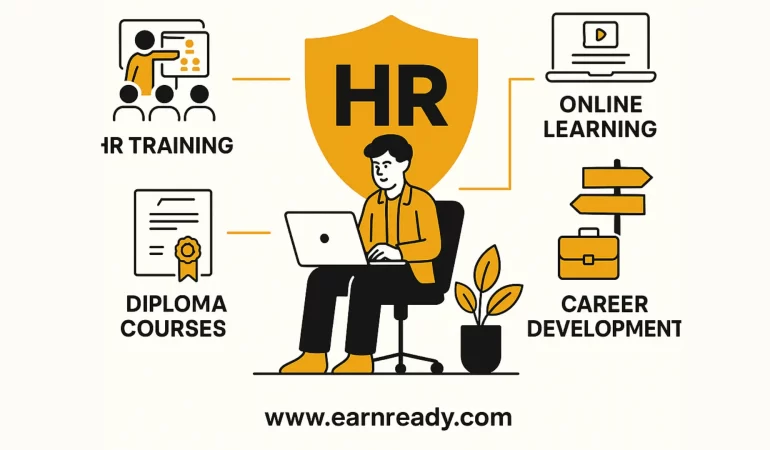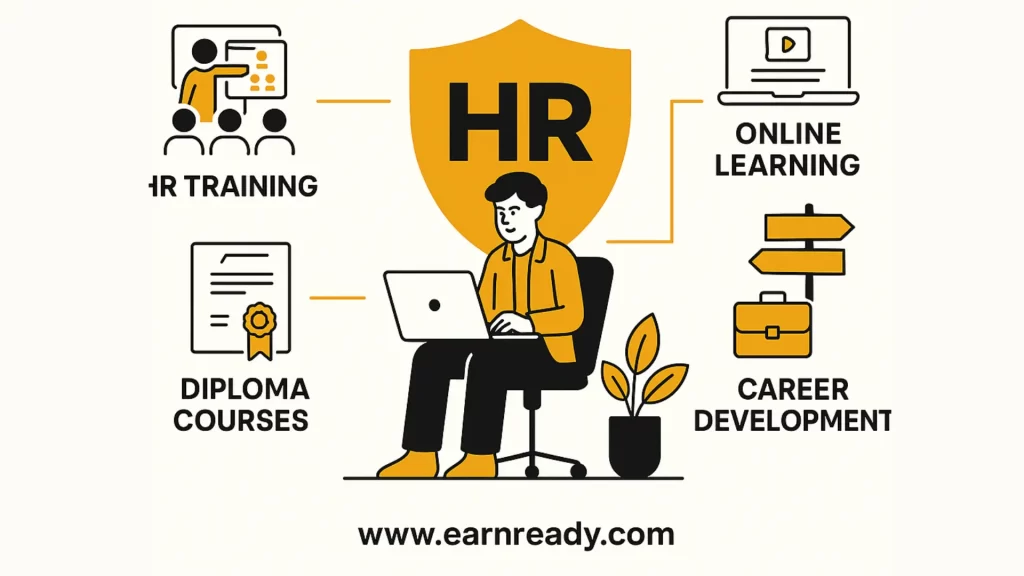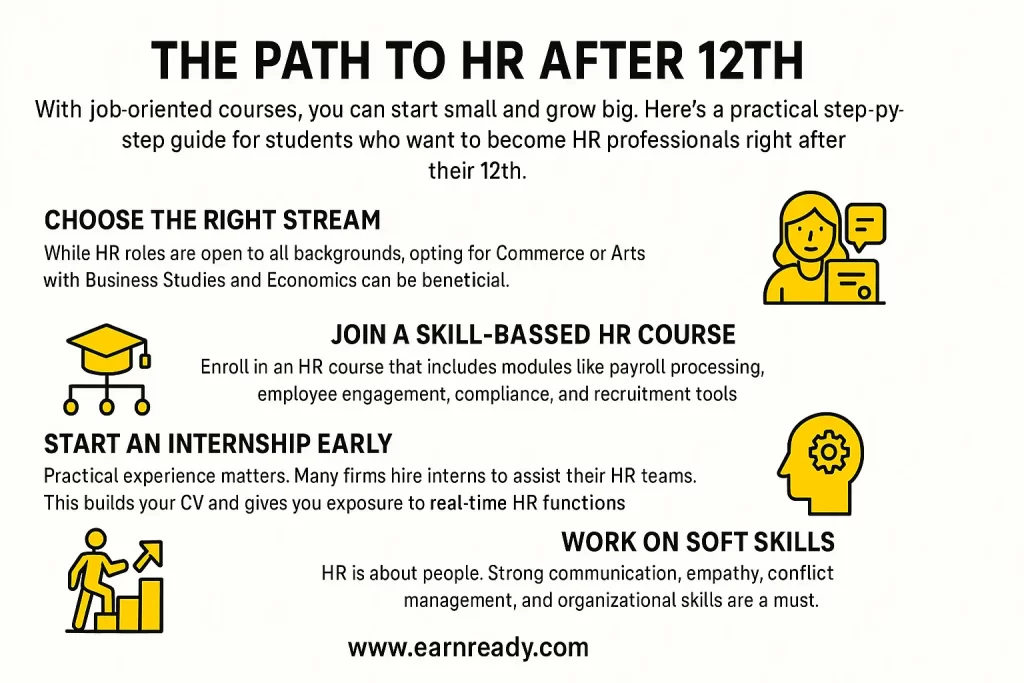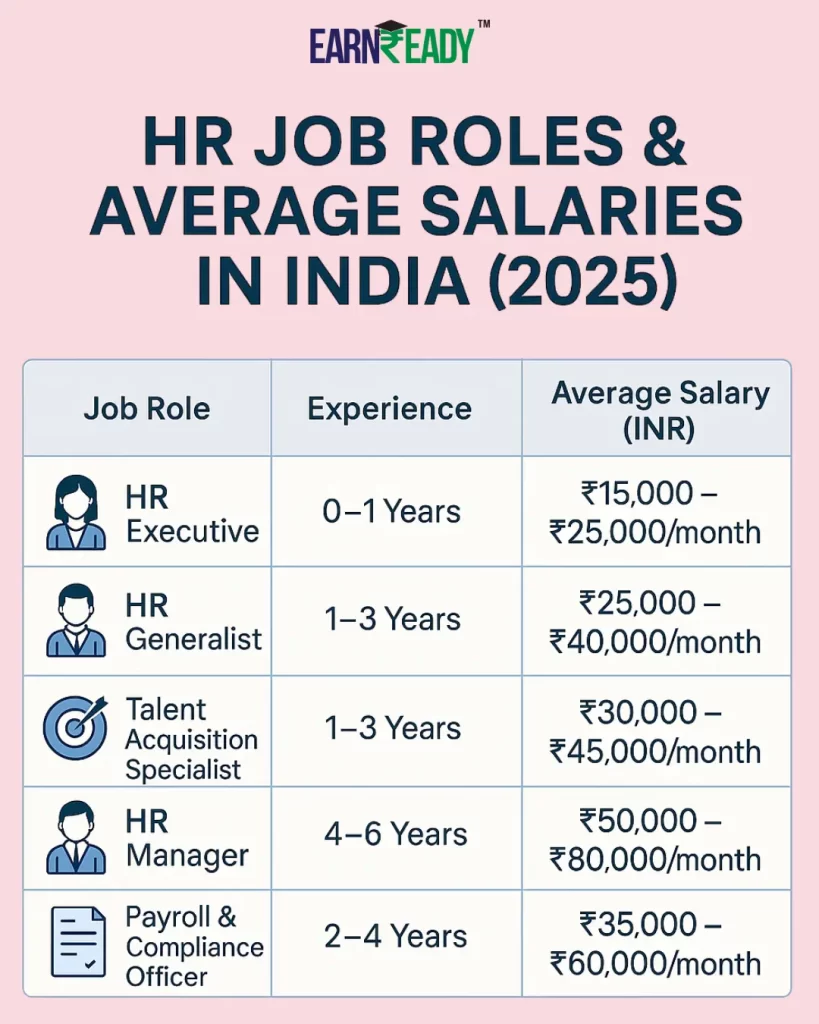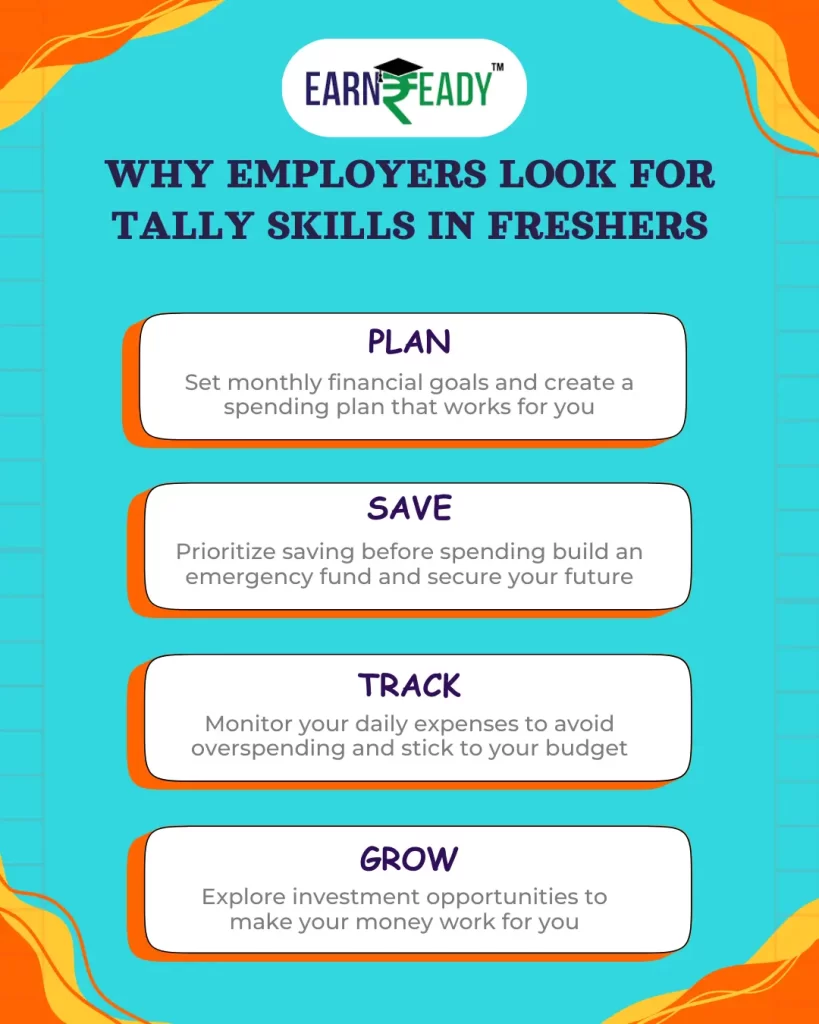HR Course Online 2025: Ultimate Power Guide to Skyrocket Your Career in Human Resource
HR Course Online 2025: Ultimate Power Guide to Skyrocket Your Career in Human Resource


Table of Contents
- Introduction
- What is HR Course Online?
- Importance of HR Online Training
- Top Benefits of HR Course Online
- Who Should Enroll in HR Online Courses?
- How to Start HR Career After 12th?
- Essential Skills You Learn in HR Course Online
- HR Career Path Without Experience
- Why Choose EarnReady HR Courses?
- Salary and Career Growth in HR
- Frequently Asked Questions
Introduction
HR course online programs are transforming how we enter the human resource industry. Whether you’re a student who just passed 12th or someone looking to start fresh, HR online training gives you a professional edge. In this guide, we’ll break down everything you need to know about choosing and succeeding in an HR course online.
What is HR Course Online?
HR course online refers to a virtual training program designed to teach human resource management, payroll, recruitment, employee engagement, and related skills. These courses help students gain industry-level knowledge without physically attending college.
Importance of HR Online Training
HR online training allows students to learn from anywhere, anytime. It saves time, reduces costs, and offers certification that is accepted by many companies globally. You also get hands-on practice with case studies and HR software.
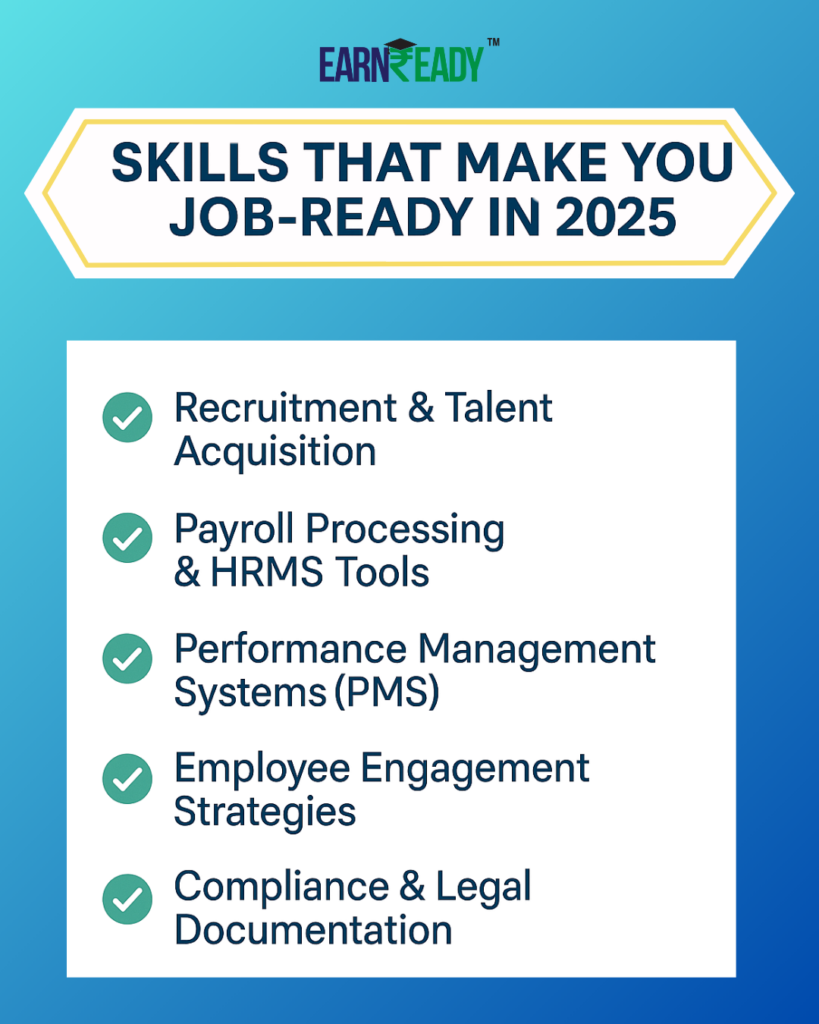
Top Benefits of HR Course Online
Study from home with flexibility
Learn practical skills like payroll, HRMS, and recruitment
Access career-focused modules designed by industry experts
Get certification to apply for entry-level HR jobs
Start working right after 12th without a degree
Who Should Enroll in HR Online Courses?
Anyone interested in management, people skills, or administrative roles should take an HR course online. This includes:
12th pass students
College dropouts
Housewives returning to the workforce
Freshers looking for job-oriented short courses
How to Start HR Career After 12th?
To start your HR career after 12th, you can directly enroll in job-oriented HR online training. These short-term programs from platforms like EarnReady provide real-life HR assignments, internship opportunities, and resume-building support.
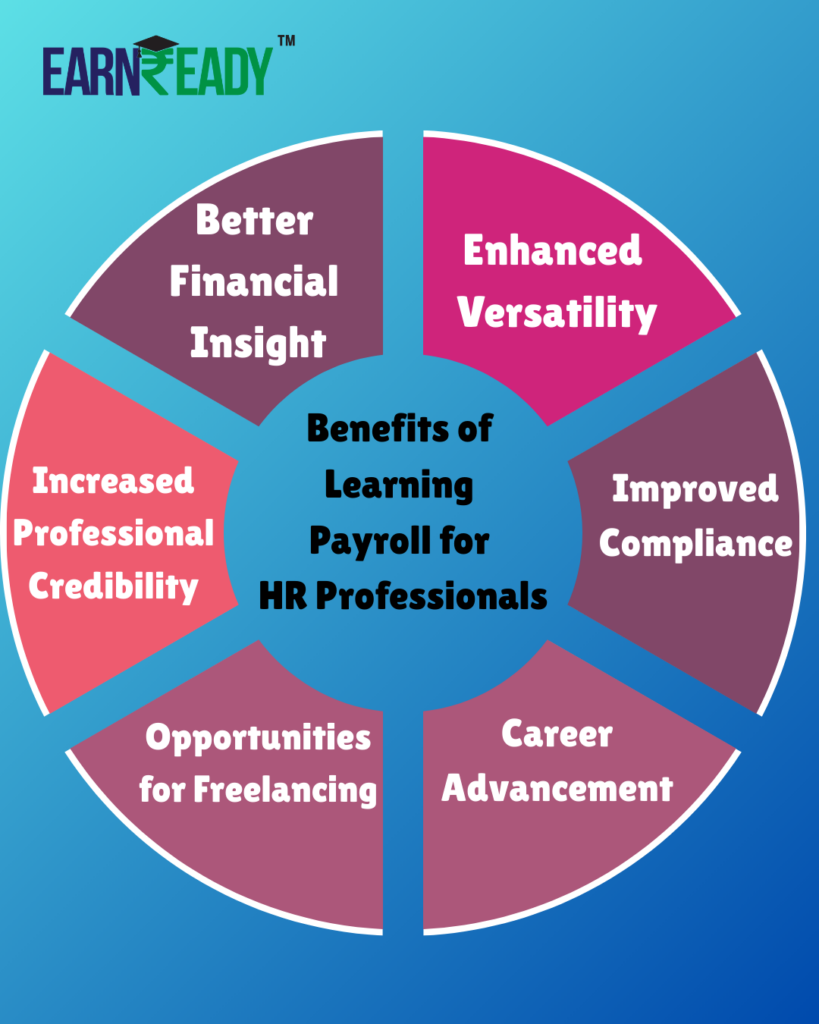
Essential Skills You Learn in HR Course Online
Here are key HR skills taught in most HR course online programs:
Payroll management
Attendance tracking systems
Recruitment and selection process
Handling employee grievances
HR documentation and legal compliance
Software like Tally, Excel, HRMS tools
HR Career Path Without Experience
Yes, you can build an HR career even if you don’t have any prior experience. By completing a practical HR course online, companies are willing to hire you for roles such as:
HR Intern
Payroll Coordinator
HR Executive Trainee
Why Choose EarnReady HR Courses?
EarnReady offers specialized HR online training created for absolute beginners. Here’s why students prefer our platform:
Courses start immediately after 12th
Practical assignments based on real-world HR cases
Internship certificate included
Resume-building sessions
Personalized mentorship and job placement support
Unlike traditional colleges, EarnReady courses are quick, affordable, and more aligned with industry needs.

Salary and Career Growth in HR
Starting salaries after completing HR course online can range between ₹10,000 to ₹20,000 monthly for freshers. With 2–3 years of experience, your role may advance to HR Manager, and your salary could rise to ₹35,000–₹50,000 per month.
Roles you can grow into:
Recruitment Specialist
Payroll Analyst
HR Business Partner
Training and Development Officer



